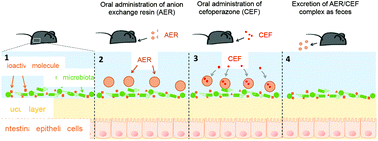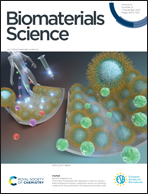Specific adsorption of a β-lactam antibiotic in vivo by an anion-exchange resin for protection of the intestinal microbiota†
Abstract
The fraction of antibiotics that are excreted from the intestine during administration leads to disruption of commensal bacteria as well as resulting in dysbiosis and various diseases. To protect the gut microbiota during treatment with antibiotics, use of activated carbon (AC) has recently been reported as a method to adsorb antibiotics. However, the antibiotic adsorption by AC is nonspecific and may also result in the adsorption of essential biological molecules. In this work, we reported that an anion exchange resin (AER) has better specificity than AC for adsorbing the β-lactam antibiotic cefoperazone (CEF). Because CEF has a negatively charged carboxylate group and a conjugated system, the AER was used to adsorb CEF through electrostatic and π–π interactions. The AER was specific for CEF over biological molecules such as bile acids and vitamins in the intestine. The AER protected Escherichia coli from CEF in vitro. Furthermore, oral administration of the AER reduced the fecal free CEF concentration, and protected the gut microbiota from CEF-induced dysbiosis.



 Please wait while we load your content...
Please wait while we load your content...